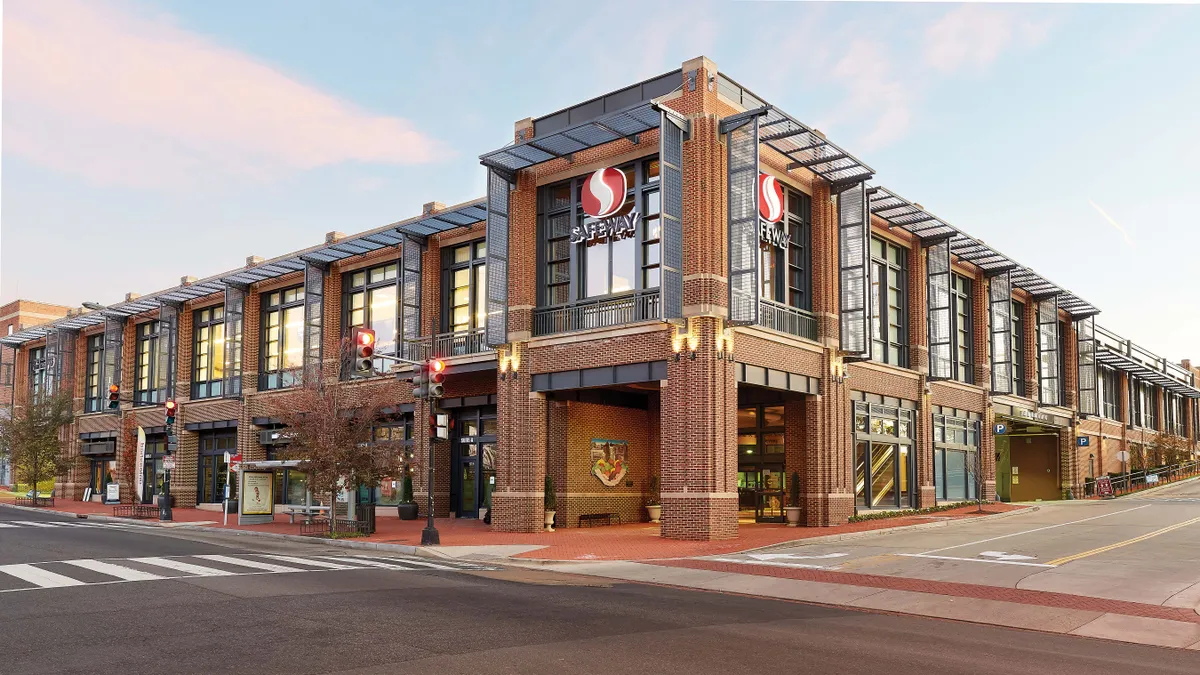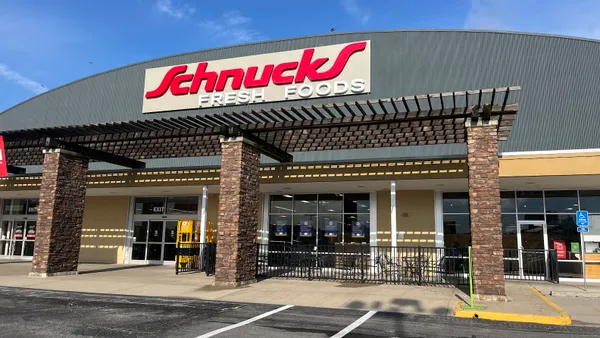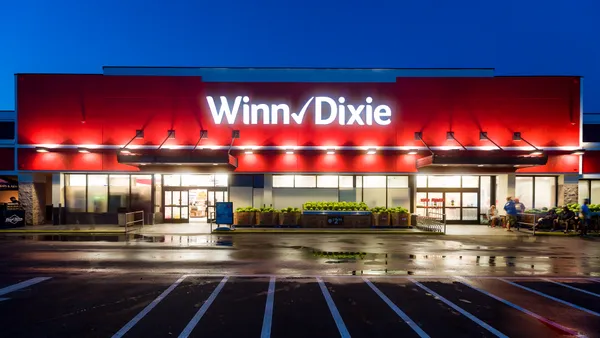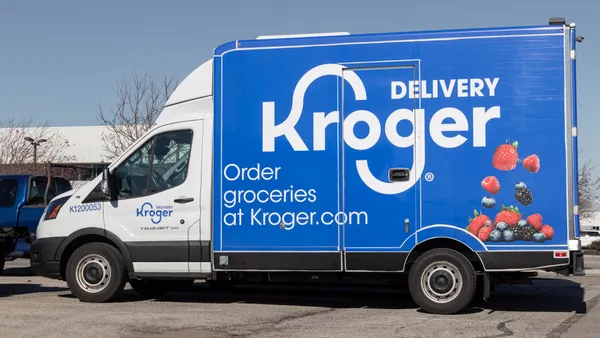Dive Brief:
- Kroger and Albertsons said Monday that they have increased by more than a third the number of stores they plan to divest to C&S Wholesale Grocers in connection with the grocery chains’ plans to merge. The all-cash deal is now valued at $2.9 billion.
- The divestiture agreement now calls for Kroger and Albertsons to sell 579 stores to C&S and includes additional non-store assets such as more infrastructure and access by C&S to the Signature and O Organics private brands. C&S is also now slated to acquire Albertsons’ Haggen banner in addition to the three other banners it already was in line to purchase as part of the divestiture plan.
- The announcement comes as Kroger and Albertsons push back on an effort by the Federal Trade Commission to impose a preliminary injunction to stop the merger.
Dive Insight:
Kroger and Albertsons are positioning the updated divestiture plan as a stronger package of stores and non-store assets to “further enable C&S to operate competitively.”
The grocers said the update responds to concerns from state and federal antitrust regulators about the original deal. In announcing its legal fight to block the mega-merger, the FTC said that the grocers’ proposed combination would weaken competition, resulting in higher grocery prices, lower the quality of products and services, and hurt grocery workers. The FTC also hammered the grocers’ original divestiture plan to C&S, claiming that C&S would struggle to create a “functioning business” out of the “hodgepodge” divested stores.
Kroger and Albertsons reiterated Monday their stance that their merger will result in lower grocery prices, give consumers more choices and support unionized grocery jobs. They also continued to promote C&S as a strong buyer for the divested assets, calling the wholesaler a “well-capitalized competitor” entering new geographies.
"We are confident this expanded divestiture package will provide the stores, supporting assets and expert operators needed to ensure these stores continue to successfully serve their communities for many generations to come," C&S CEO Eric Winn said in a statement.
The updated divestiture plan revises the targeted geographic areas and adds Harris Teeter stores in Delaware, marking the 17th state C&S would enter as a grocery retailer if the deal goes through.
Kroger and Albertsons have tweaked the number of divested stores across 18 states and Washington, D.C. Some of those changes are sizable increases, such as adding 77 more stores in Arizona, 39 more stores in Colorado and 20 more stores in Washington state to the deal. Those last two states have been vocal in criticizing the merger.
Under the amended agreement, C&S would license the Albertsons banner in California and Wyoming and the Safeway banner in Arizona and Colorado. Kroger said it plans to re-banner stores currently under those banners in those states that it intends to hold onto.
C&S would also pick up the Haggen banner, which runs 15 stores in Washington and has more than 2,000 workers, in addition to the QFC, Mariano's and Carrs banners the company was already slated to buy.
Kroger and Albertsons noted that all fuel centers and pharmacies linked with the divested stores will continue to operate.
Along with the changes in the divested stores, the updated plan includes expanded corporate and office infrastructure to C&S as well as increased distribution capacity “through a combination of different and larger facilities as well as expanded transition services agreements” and the addition of one dairy facility.
C&S would also receive access to Signature and O Organics — two major Albertsons brands — in addition to the previous agreement’s divestiture of the Debi Lilly Design, Primo Taglio, Open Nature, ReadyMeals and Waterfront Bistro brands.
Following the FTC’s pushback on the original divestiture deal, analysts suggested that Kroger and Albertsons rethink their plan to offload assets. Given C&S’s more limited experience with running retail stores, analysts noted that Kroger and Albertsons may want to provide a more detailed plan for how they would support the wholesaler with control of a store fleet more than triple its current count.











